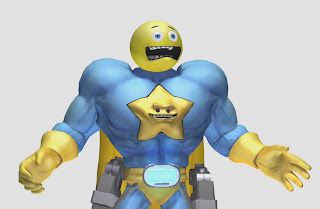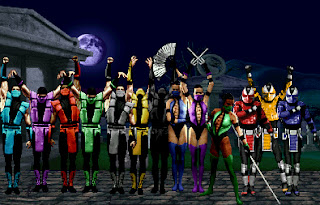I have looked into this a little in the past – Character types and roles etc. There are a few categories and purposes of characters – Protagonist, Mentor, muse, thresh hold guardian, nemesis and the like. I’m not gonna talk about that really, is pretty boring and vague. In video games they normally stay very obvious with the roles… Mario for example is meant to be an “everyman” on “common Joe” protagonist – He’s a plumber for Christ’s sake, Princess Peach is the damsel in distress and Bowser is the nemesis. Along the way you may meet Toadstool who is a helper, or guide along the journey. These are all very typical character types and can be seen in almost all games.
Where games are different from other mediums you have to be the decision maker and still be limited by the game area – Pac Man can’t just leave the screen and report to the police that the ghost have gone mental, that’s stupid and does not fit into the game. However his character is developed from the gameplay and situation around him. We in a little way become Pac Man and empathise with the imminent peril. This is all orchestrated through game elements and aided by clear visual and audio indicators. That is one challenge games face – conveyance. For example in Battlefield 3 (toted as the most realistic multiplayer shooter) you have a radar which in reality would not work, you get a little marker come on the screen to confirm you hit an enemy with a bullet and get text on the screen when someone is killed. While all of this detracts from the realism it is essential for the player to play the game better. If we didn’t know we killed an enemy we would be holding the position until the game was up. What I’m getting at is that games struggle to function as both games and totally immersive experiences, there has to be a cut off where the game is still fun.
When I think “character” I tend to think of films before games (I don’t really read novels). Some strong examples of movie characters can be seen in Tarantino films and almost anything with Robert De Niro in pre 2000. I watched taxi driver the other day which stars De Niro and his character totally carried the film. It is interesting as the character portrayed is basically not normal – He reflects the dark city around him and the decline of morals, often played out through his own personal thoughts through his diary. I think it is interesting as the viewer sympathises with him, although he seems like a psycho nut job. If you made a taxi Driver game it would suck – You just can’t recreate the feel and make a game out of everything.
An example of a game where the character & story are a main focus is the Mass Effect series. In Mass Effect you get to make “important” choices of who lives and dies, and who to shag on the team. The more good/evil you do the more access you have to do more good/evil deeds. They have even made the games follow on sequentially so your decisions carry over onto the next game. I have got to say this is all very clever but for me is just a gimmick, I seduced some alien and got a sexy cut scene – But why on earth would I care? I don’t feel the same attachment to the characters as I do in movies (or reality of course) and would eject them into space after given the choice, just for a laugh.






